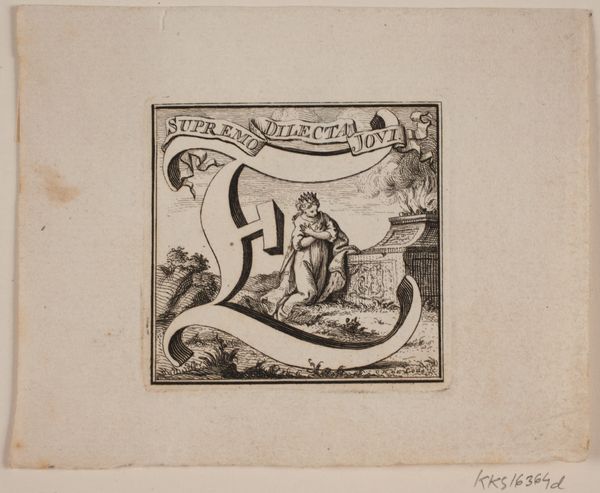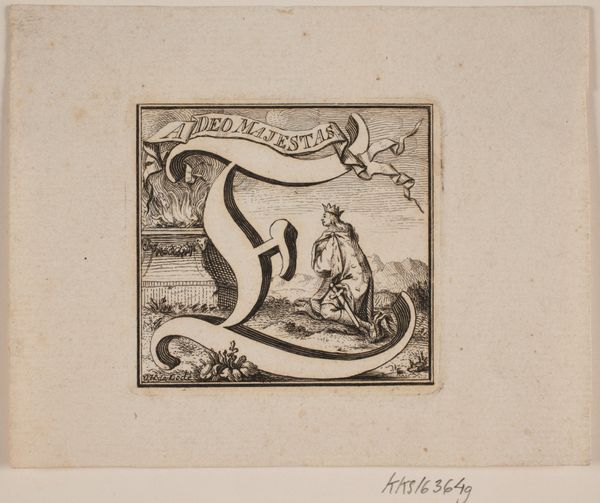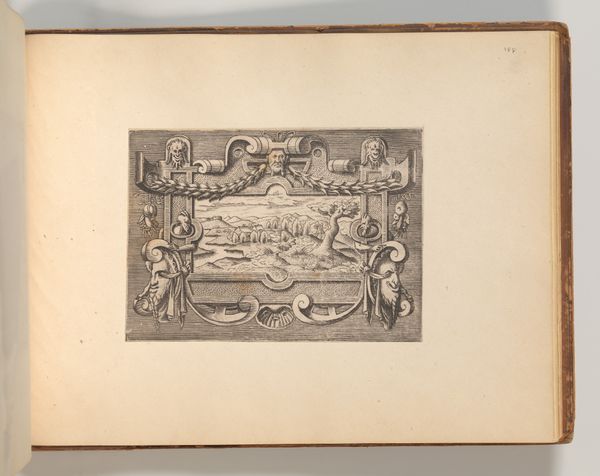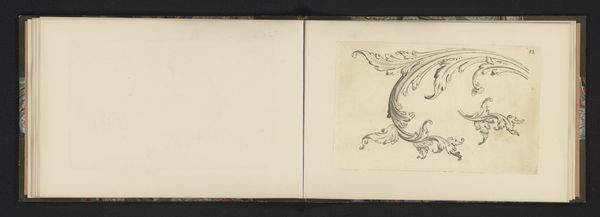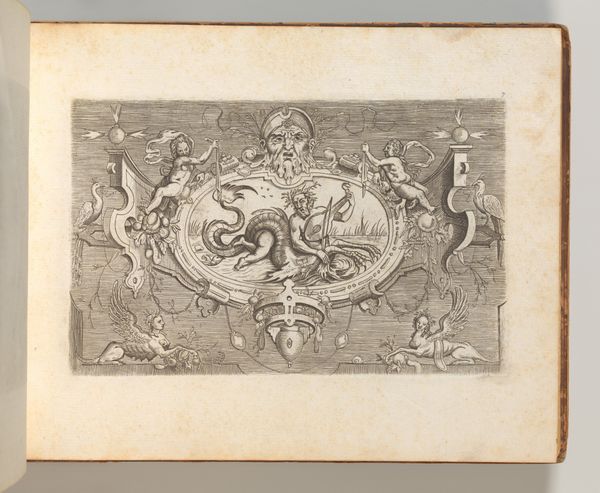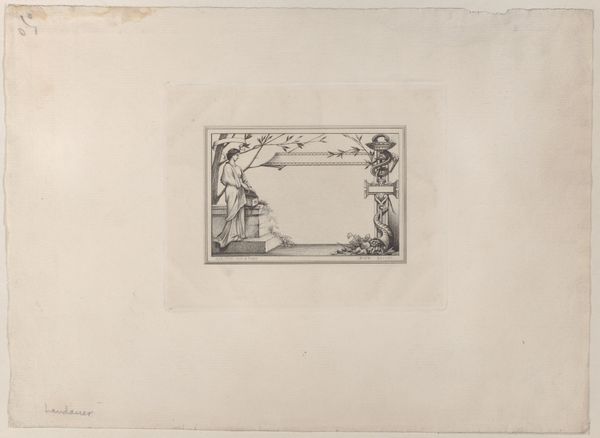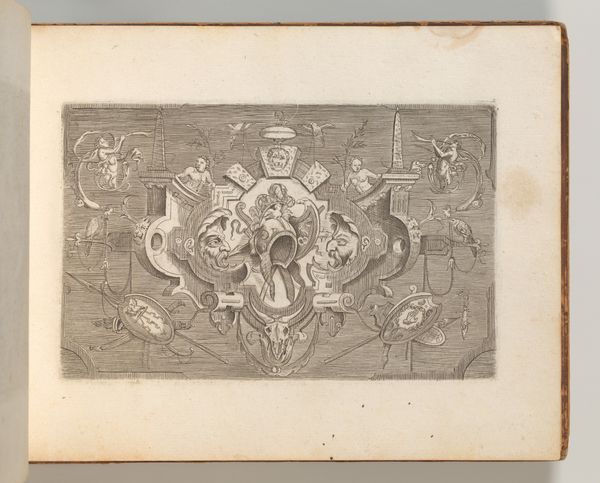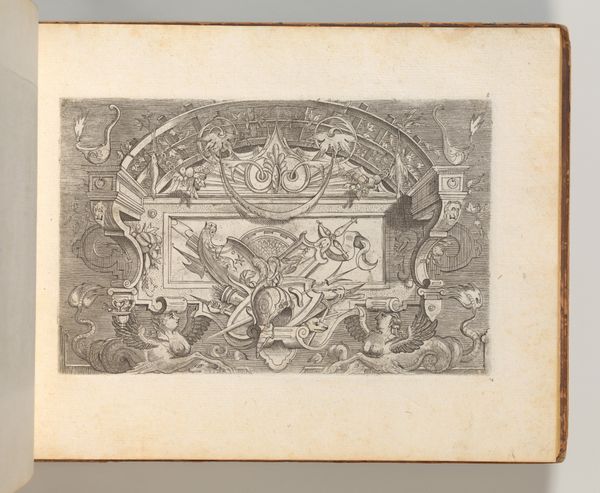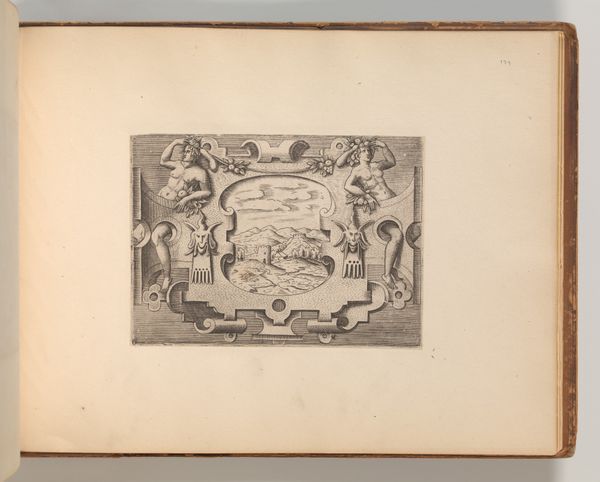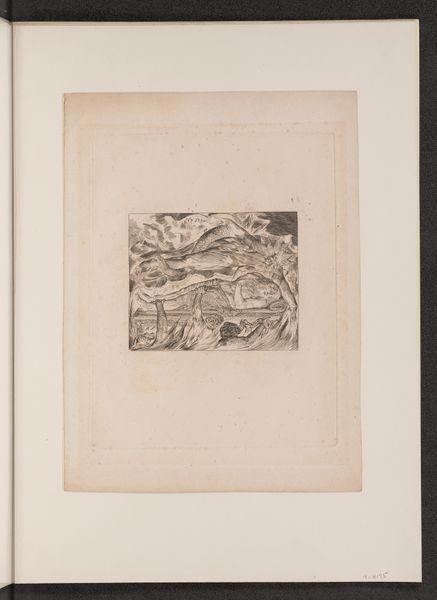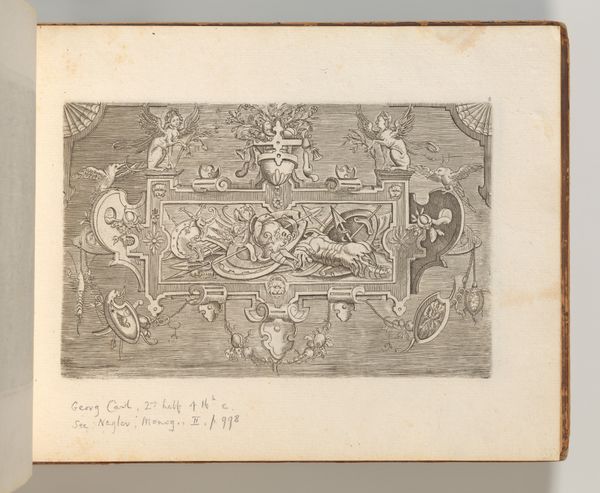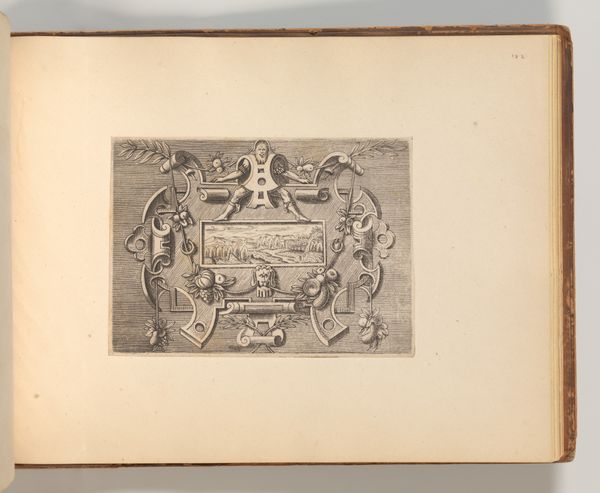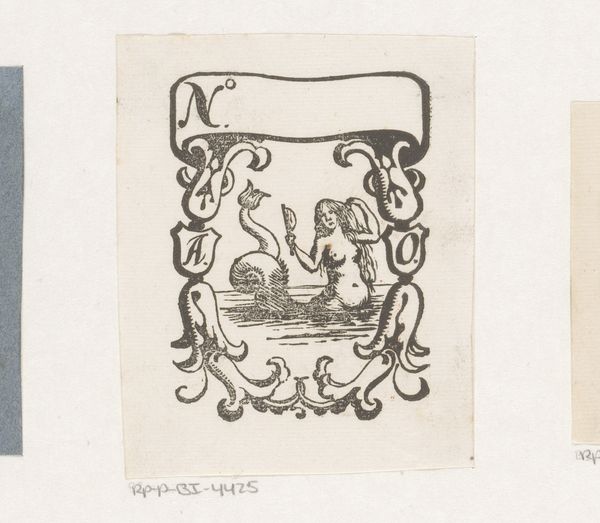
drawing, print, ink, engraving
#
drawing
# print
#
figuration
#
ink
#
line
#
history-painting
#
engraving
Dimensions: 55 mm (height) x 59 mm (width) (plademaal)
Editor: This intricate print, titled "Initial til Frederik IV's Salvingsakt," from 1749 by Odvardt Helmoldt de Lode, presents a detailed scene framed by an ornate letter. It's an engraving, using ink on either paper or parchment. The scene inside feels incredibly formal and… staged. How do you interpret this work? Curator: It is fascinating how de Lode condenses the grand event of Frederik IV’s anointment into such a small, yet impactful, image. We have to consider the societal function of such prints. This isn't just art for art's sake, it's visual propaganda! What do you think this initial was meant to convey about the monarchy? Editor: Well, the banner at the top with "Surgit ut exhilaret," feels triumphant. But visually, I notice this combination of interior space, very formally designed, juxtaposed with what looks like a symbolic representation of the king outside, in this rugged, almost mythological space. Curator: Precisely. The interior, complete with attendants, represents the established power structure, the institution of the monarchy. While outside, the King's depiction is connected to nature, even a sense of divine right. The architectural interior reminds us of the weight of tradition, but the depiction of Frederik within nature provides an avenue to imagine him beyond such rigid constraint. Think of how royal portraits, historically, functioned as endorsements of power. This does something similar, just at a much smaller scale and within the sphere of print culture, making it accessible for wider distribution. How might wider distribution shift popular belief? Editor: I hadn’t considered its distribution. Making it a print democratizes the image, allowing more people access to the symbolism of the King. I see now how a seemingly small image could play a large role in shaping public perception. Curator: Exactly! It really highlights the power dynamics at play, doesn't it? We are reminded that even artistic creations intended for propaganda were shaped by artists in unexpected ways. Editor: It makes you wonder about the relationship of artists to power. Now I understand how de Lode contributed to, and perhaps complicated, the image of the monarchy.
Comments
No comments
Be the first to comment and join the conversation on the ultimate creative platform.

